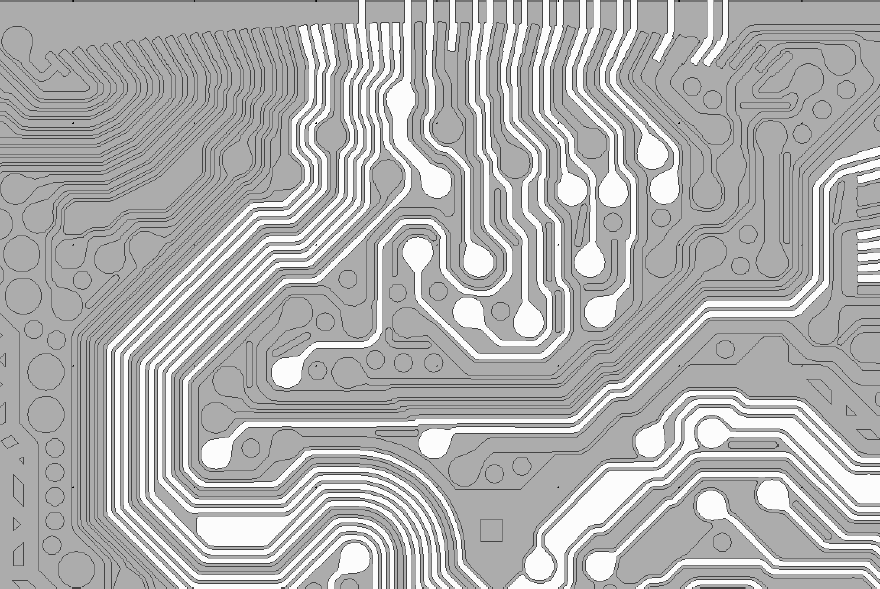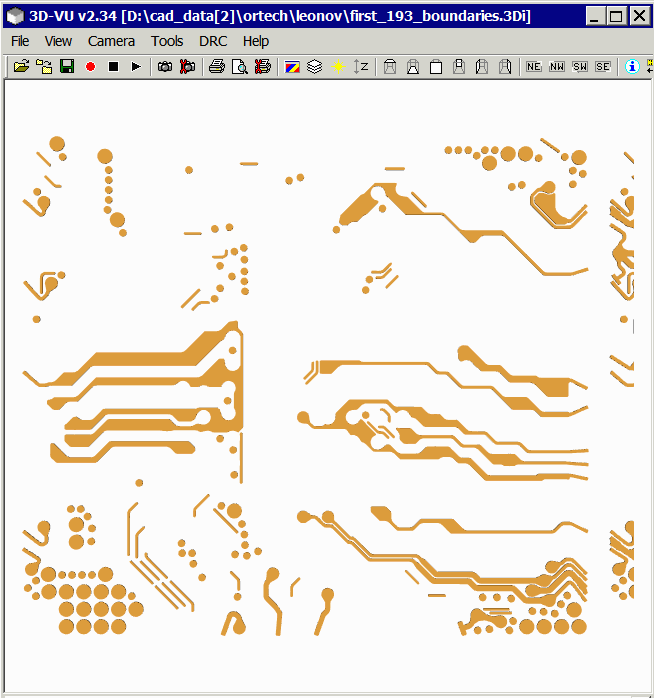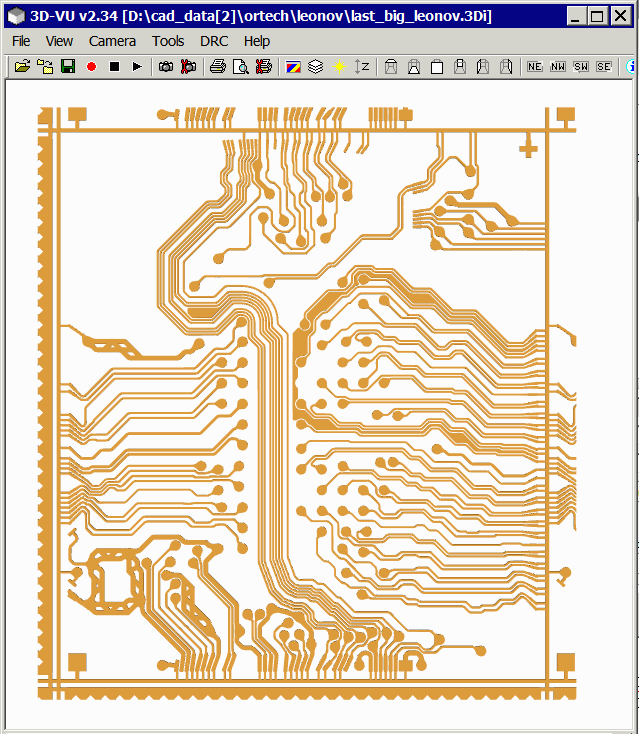An OEM client of Artwork's GBRUnion library reported a problem in interpreting the ASCII output - in particular where there are a number of LEONOV polygons mixed together with regular polygons. In order to help troubleshoot his problem I took the ASCII file and broke it into a number of smaller files.
So that I could view the ASCII data in Artwork's 3DVU program, I modified the header to meet the requirements of ASC23DI.exe. How to do this is documented in this article.
The file we are starting with is called window_clip.txt and after the header is modified it is called window_clip2.txt.
If I view the entire window_clip2.txt file in 3DVU this is what I see. (And what our client should be seeing.)

But the client is not showing a correct layout. Here is what the client shows (only a partial screen shot)



